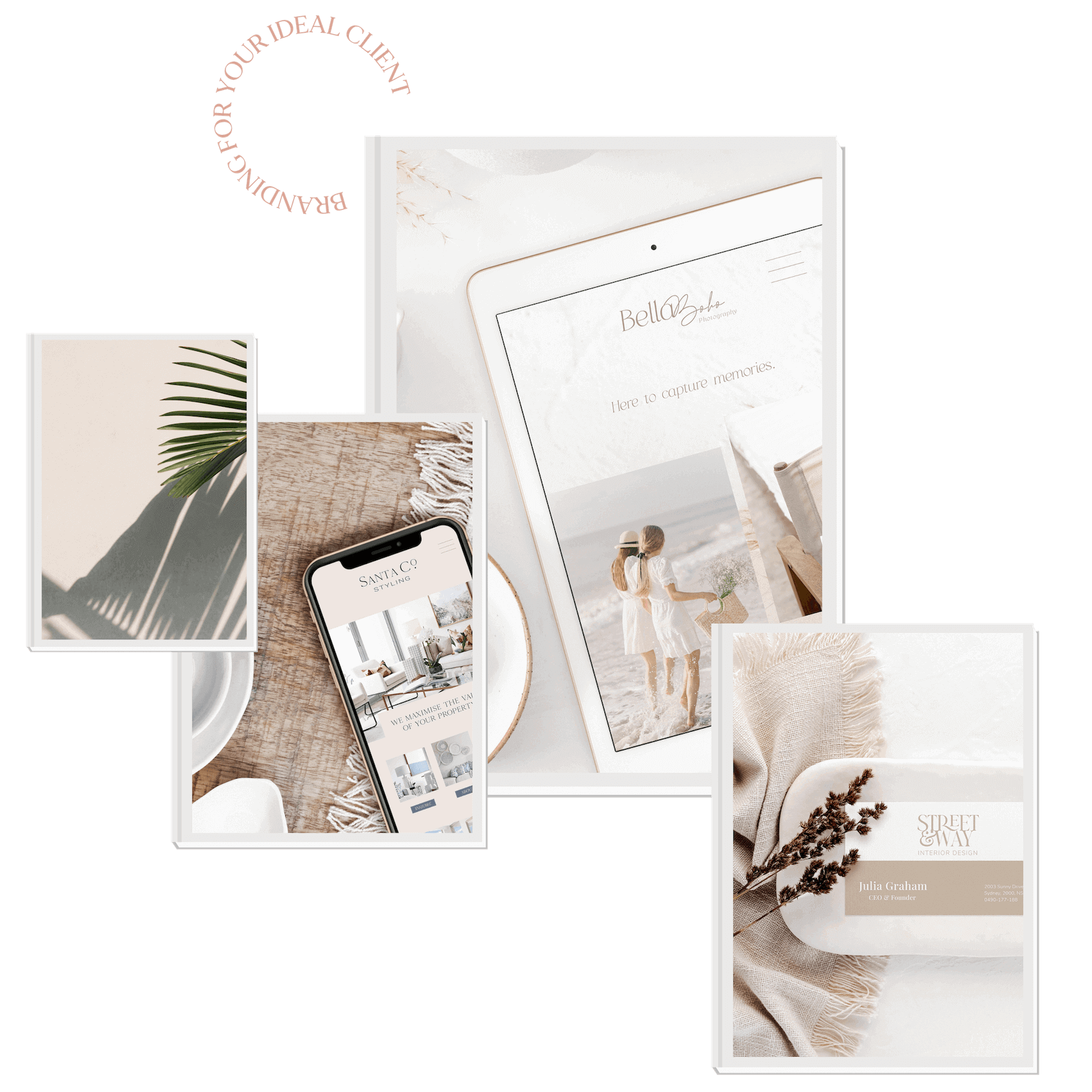How to Develop Your Own Unique Brand Strategy That Works
There is a good reason why more and more companies are trying to position their products, services, or even the entire company as a brand: They have essential value. For example, the brand value of the Apple brand in 2021 was no less than $263 billion. That is because brands justify high prices, increase customer satisfaction and loyalty.
As a brand strategy coach for small businesses, I know how important it is to position yourself as a distinct brand right from the start to increase your perceived value to potential clients. The perceived value is why branding becomes increasingly relevant in a globalised world with saturated markets and high competition.
So how can I as a business create my own brand strategy?
Before we start, let's first clarify what a brand strategy actually is.
What is a Brand Strategy?
“A brand strategy is a roadmap for developing a brand that leads to the goal of being perceived in a certain way by its ideal customers.”
A concise brand strategy includes multiple elements.
Follow these easy steps to cover the most essential ones:
Step 1 - Define your Brand Heart
Your brand heart consists of your purpose, vision, mission, and values. Start with your purpose. Ask yourself why your brand exists and the higher cause it is here to fulfill. The purpose is not to simply make money, but more what your brand aims to inspire in people and what difference it is here to make.
Once you are clear on your purpose, ask yourself where your brand should be in 10 years. What will it have achieved and how will it have transformed customer's lives? Will it have inspired people for a change? Brainstorm and wrap it up in a maximum of 2 sentences to be your brand vision.
Next, you define your way on how to achieve your vision through your mission. Your mission describes what your brand does today to achieve this future vision. To develop your mission, keep your target audience, your services, and your unique selling point in mind.
Finally, specify at least three values your brand embodies and upholds through appropriate behaviour. Make sure you don’t only write down buzzwords, such as ‘honesty’. Instead, specify why it is important and how you are going to enact honesty. For example, always do the right thing and speak the truth. It is much easier to stick to specific behaviour metrics like these than to buzzwords.
Step 2 - Define your Ideal Customer
Although most businesses have a broad idea and vast understanding of who they are serving, developing a distinct brand will require more than that. Before you can develop your brand's value proposition, brand voice and start your visual branding, you need to be very specific about who you want to serve. That means to get crystal clear on who your ideal client is.
It helps to know who you are speaking to and how to address them to resonate and connect emotionally. To do this, create a specific and detailed client persona that includes geographics, psychographics, and user behaviour parameters. Give yourself time for this and if you know someone very close to your ideal client, ask if you can conduct an in-depth interview on needs, desires and pain points to refine your ideal client persona. To find out your interviewee's underlying needs, use the rule of 5 and repeat the question "why" ideally 5 times.
Develop your own and aligned Brand Strategy
FOR FREE in 5 simple steps
Learn what brand strategy is and how to develop your own Brand Strategy to set up your business for success and attract your ideal clients
Get crystal clear on your plan and next steps
Step 3 - Develop your Value Proposition
Now that you have nailed down these first two steps, develop your value proposition to create an offer for your ideal customer that serves their needs on a functional, social and emotional level. This step is essential to your brand because your business strategy needs to be tightly lashed to your brand. Only if you understand your clients’ emotions and deep pain points (ideally before they even know about it), will they love your brand.
“Get closer than ever to your customers. So close that you can tell them what they need well before they even realise it themselves.” - Steve Jobs
Step 4 - Craft your Brand Personality & Brand Voice
The way your brand speaks to its customers represents its brand voice and it reflects your brand’s personality. Define your brand’s personality first: For this, think of what kind of person best resonates with your ideal clients and your products/services.
Think of your brand as a person and ask yourself what personality traits and attributes this person would have and how it would behave. Is it a luxurious, extroverted elegant woman with bold self-confidence and the aim to provoke? Or is it a best friend that supports and holds the customer's hand with the will to inspire?
Once you know your brand’s personality, extract the typical language your brand uses when communicating. Does it use slang, jargon, certain colloquial expressions? What quote could repeatedly come from it?
Step 5 - Hire a Brand Designer to create your Brand Identity
After you have set your brand strategy foundations, it’s time to start your branding and create your brand identity. A brand’s identity is represented in all your brand visuals and the actual process is called branding. That includes your brand’s logo, colours, sub marks, fonts, patterns, imagery, and online and offline marketing materials, such as your website, social media channels, or email campaigns. If you’d like to know what branding is and what it all includes, read this article to learn everything you need to know about branding.
As things in today’s world are increasingly happening online, this aspect is essential for your brand to prevail in the market long term. Great design goes hand in hand with strategy. Your brand foundation needs to be reflected in your brand design to correctly show your brand’s personality in a way that appeals to your ideal customers. Because this step is so crucial to your brand’s success, I recommend hiring a professional graphic and web designer to bring your brand strategy to life.
“Branding is the process of connecting good strategy with good creativity.” - Marty Neumeier
Step 6 - Link your Brand Strategy with your Marketing
As soon as your visuals are complete, identify what marketing channels make sense to apply to your brand. Where does your ideal client hang out? What type of channels suits the vibe and personality of your brand?
Let’s say your brand is traditional and targets males 50+ that have had higher education, are financially well situated, and seek to increase their prestige. Then stay away from TikTok and Snapchat, but find out which magazines or memberships those customers use to collaborate or advertise. But if your brand is a happy, cheery, visual brand aiming to inspire women aged 20-30, then setting up an Instagram could be a suitable platform for you to use.
As you can see, it depends on what your brand’s personality is and who you want to speak to. However, your website remains a must-have as your visual business card. Unless you are serving older generations who don’t use the internet, I always recommend getting your SEO ducks in a row, so your customers can find you on Google.
I sincerely hope this 6-step plan to your brand strategy helped you to get going. However, in case you need seek support, I currently offer brand and marketing audits, helping you to discover your blind spots and support with brand strategy on request: hello@coastcreation.com
HI THERE
Welcome the Blog
I’m Brand Strategist & Squarespace Website Designer and support you in building an emotional connection to your ideal clients through your Branding and Website









